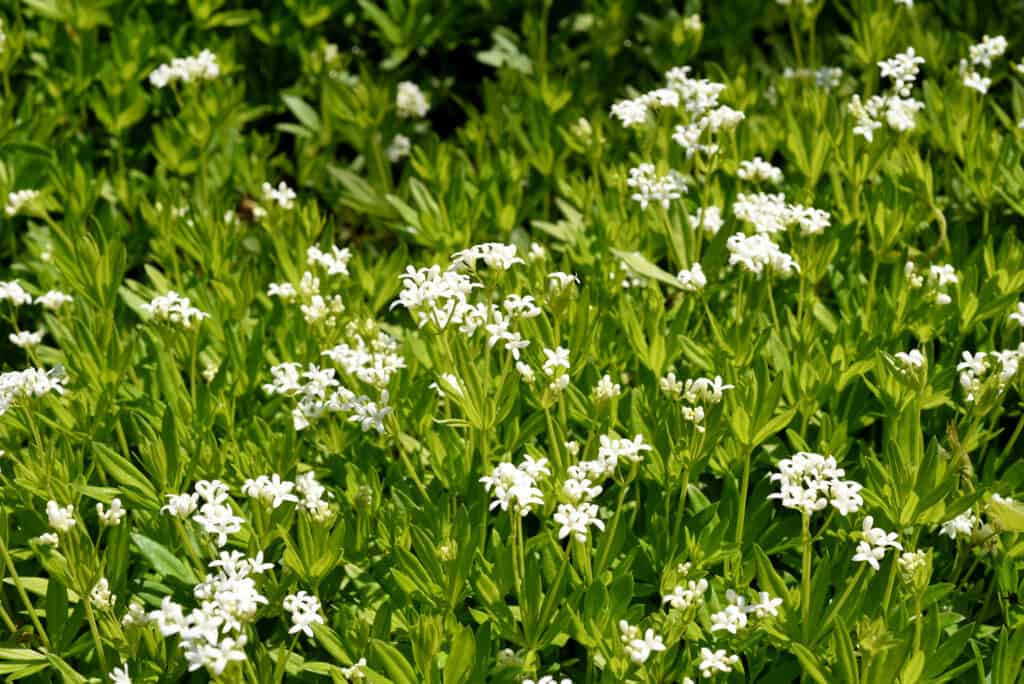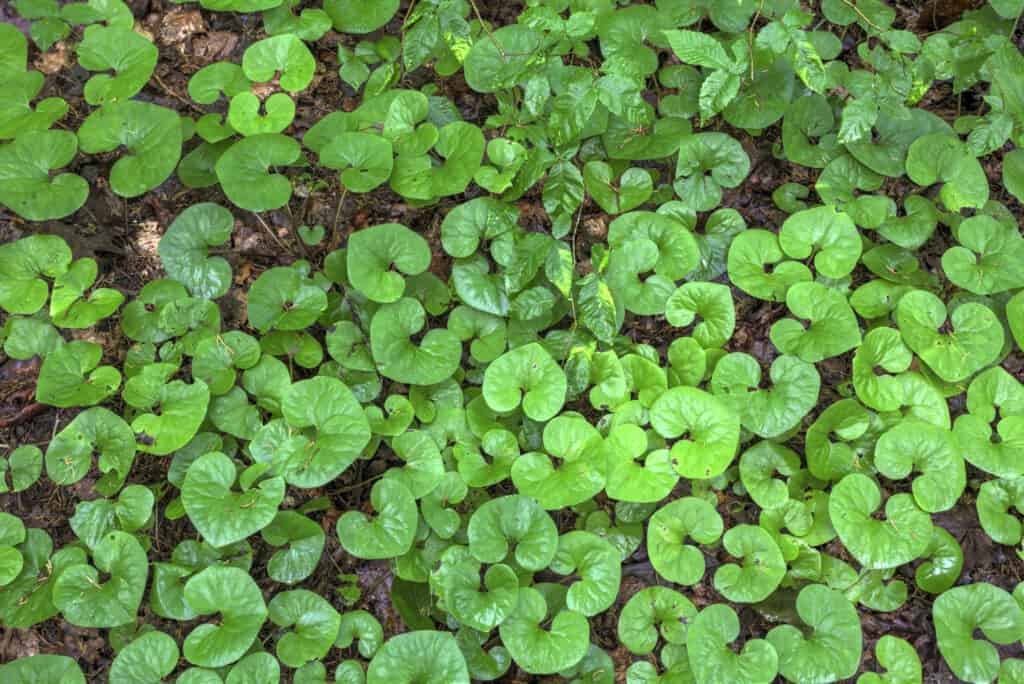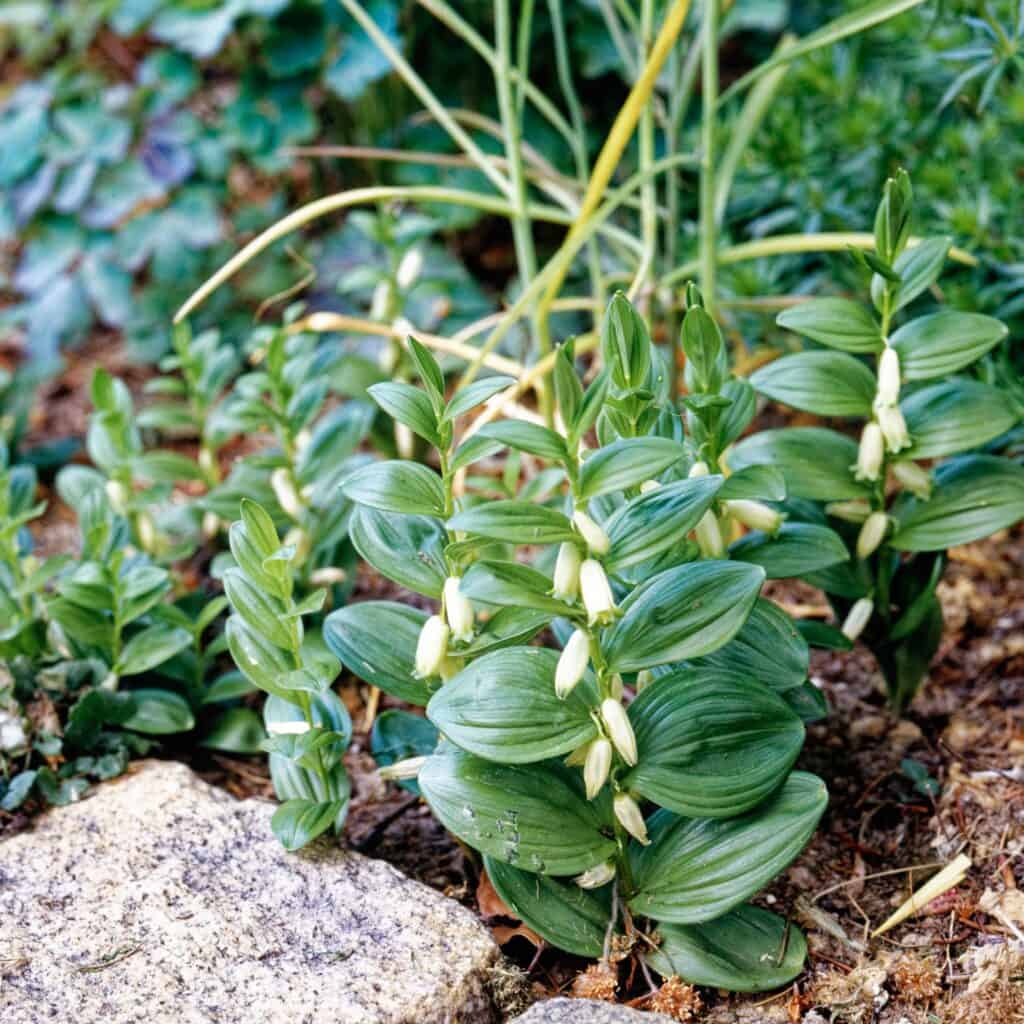If you have a shaded area in your garden, you probably know how difficult it can be to find the perfect plant. This problem is especially true of ground covers. You don’t want your plants to merely survive; you want them to thrive and grow strong to crowd out the weeds! Using ground covers as a living mulch that covers the ground is a trouble-free trick used by gardeners worldwide. Finding the right plant for the right area will ensure that your plants live and grow happily for many years. But which ground covers thrive in full shade? Let’s find out!
First, we should define full shade. Full shade does not mean zero sunshine. It means three hours of direct sunlight or less per day. All plants need at least a few hours of sun to photosynthesize and live. You can tell if a plant is thriving if it puts out firm new growth that is bright and strong, the roots will be healthy, and the plant will be able to fight off diseases and pests easily. Plenty of plants do best in full-shade conditions, and the following ground covers are at the top of the list.
1. Sweet Woodruff (Galium odoratum)
Sweet woodruff definitely makes the list of plants that thrive in the shade. It looks lovely under shade trees and grows vigorously with only a few hours of sun per day. This ground cover grows to 15 inches high and produces white star-shaped flowers in the first month of summer that lasts through fall. Both the leaves and the flowers of sweet woodruff smell heavenly! After it is finished flowering, it produces spikey round fruits. If you live in USDA Hardiness Zones 5 – 8, you will have no trouble growing sweet woodruff. Provide it with plenty of moisture and rich, slightly acidic soil. It is deer-resistant, and chickens don’t like it much, either.

iStock.com/emer1940
2. Wild Ginger (Asarum shuttleworthii)
Wild ginger is one of the easiest ground covers to grow. It has heart-shaped variegated leaves that are green all year long. It is hardy in USDA Zones 6 – 9. Wild ginger creates a dense ground cover that does an excellent job of smothering weeds. It is low growing, comes in at only four inches tall, and spreads by creeping rhizomes. Wild ginger is drought tolerant once established and prefers acidic or neutral soil with good drainage. It does well in rocky areas because of its deep, strong roots.

iStock.com/CarbonBrain
3. Bunchberry (Cornus canadensis)
Bunchberry is a shade-loving contender that is often forgotten. It makes a bright green mat so dense no weed stands a chance. The leaves are shiny and ovular, with long red-tinted veins running throughout. The effect of the beautiful leaves in its abundance is gorgeous.
This lovely member of the dogwood family likes acidic soil and is hardy between USDA Zones 2 – 7. Bunchberry is native to Asia and North America and is sometimes called creeping dogwood. It produces white flowers followed by red berries and is a prolific and fast spreader. Bunchberry prefers a cooler climate and will not thrive in hotter areas, but this one is a winner if you live in a northern region.

iStock.com/1827photo
4. Dwarf Solomon’s Seal (Polygonatum humile)
Dwarf Solomon’s seal is luscious, with soft green leaves and stems under eight inches tall. It is a member of the asparagus family and is native to China, Japan, Korea, and parts of Russia. In the spring, bell-shaped flowers form, and after that, tiny black berries. This one grows slower than some others ground covers on this list, so you may have to pull weeds for the first season while it is getting established. After that, the rhizomes will spread along, providing a thick mat that loves the shade. Dwarf Solomon’s seal prefers acidic soil and mixes well with evergreen trees and tall shrubs.

Walter Erhardt/Shutterstock.com
5. Lilyturf (Liriope muscari)
If you live in USDA Hardiness Zones 6b – 10, this is the shade-loving ground cover for you. It is often called monkey grass and is native to East Asia. It is a common ground cover plant in China and grows naturally in shady forests. It has strap-like leaves that are dark green and grow in clumps about ten inches high. In the summer, purple flower clusters emerge and peek out from the foliage. There are also white-flowered cultivars available now. After the flowers, black-colored berries form that last all winter. The warmer your climate, the faster lilyturf will grow. It is not picky about soil and will tolerate drought conditions once it has firmly established deep roots. It does not enjoy standing water or swampy conditions. Lilyturf is deer resistant.

iStock.com/sueuy song
This is a Summary of the 5 Ground Covers that Grow in Full Shade
- Sweet Woodruff
- Wild Ginger
- Bunchberry
- Dwarf Solomon’s Seal
- Lilyturf
Up Next
- 5 Annual Flowers For Shade
- 5 Perennial Flowers For Shade
- Discover the 10 Fastest-Growing Shade Trees
The post 5 Ground Covers That Grow in Full Shade appeared first on AZ Animals.
from Animal News, Facts, Rankings, and More! - AZ Animals https://ift.tt/Xf5BNOr